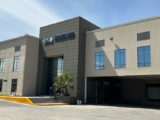Global Flexible Packaging Market Set to Reach USD 373.34 Billion by 2030, Marking Steady Growth at 4.7% CAGR
October 30, 2023The “Flexible Packaging Market Size, Share & Trends Analysis Report By Material (Plastic, Paper, Metal, Bioplastics), By Product, By Application, By Region, And Segment Forecasts, 2023 – 2030” report has been added to ResearchAndMarkets.com’s offering.
The global flexible packaging market is poised for remarkable growth, with expectations of reaching a substantial USD 373.34 billion by 2030. This growth is projected to accelerate at a steady CAGR of 4.7% from 2023 to 2030.
Key drivers of this market expansion include the increasing importance of extending food shelf life and the growing adoption of sustainable and cost-effective packaging solutions by end-users.
Enhancing Food Shelf Life:
The shelf life of food products depends on various factors, including storage conditions, packaging material, and exposure to external elements such as microorganisms, oxygen, light, and moisture. Flexible packaging, consisting of plastic films with high barrier properties, efficiently blocks the transmission of moisture, light, and oxygen, safeguarding sensitive foods. Reseal closure features in flexible packaging allow users to securely close bags or pouches, ensuring the freshness of packaged food products over multiple uses.
Sustainability and Cost Efficiency:
Flexible packaging offers sustainability benefits, consuming less energy during manufacturing and transportation compared to rigid packaging. According to the Flexible Packaging Association, the production of a flexible pouch requires 50% less energy than a rigid container of a similar size. Additionally, the lighter weight of flexible packaging reduces fuel consumption during transportation, with one truckload of flexible pouches holding the same product volume as 26 truckloads of rigid containers.
Market Dynamics:
Industry players are adopting various strategies, including partnerships, expansions, mergers & acquisitions, joint ventures, new product launches, and partnership agreements to expand their customer base and individual market share. For instance, Amcor plc recently announced its agreement to acquire Moda Systems, a New Zealand-based manufacturer of automated protein packaging machines. This strategic acquisition is set to provide Amcor plc with high-speed rotary equipment for packaging fresh meat, enhancing its competitive position in flexible packaging.
Companies Mentioned
- Amcor plc
- Mondi Group
- Huhtamaki Flexible Packaging
- Sonoco Products Company
- SEE
- Constantia Flexibles
- Bemis Manufacturing Company
- UkrMetal
- ProAmpac
- Wipak Group
- Berry Global Inc
- FlexPak Services
- Transcontinental Inc.
- Coveris
- DS Smith
- American Packaging Corporation
- InterFlex Group
- FLEX-PACK ENGINEERING, INC.
- Innovia Films
- Cosmo Films
- Novolex
- Sigma Plastics Group
- Graphic Packaging International, LLC
- Bischof+Klein SE & Co. KG
- Sudpack
Report Highlights:
- E-commerce Opportunities: The rapid growth of the e-commerce sector worldwide creates opportunities for flexible packaging manufacturers to cater to the specific needs of online retail businesses, including product protection during transit and improved unboxing experiences.
- Medical Device Market: The growing number of medical device manufacturers and ongoing research on new packaging materials are driving demand for medical flexible packaging, with a positive impact expected from the strong healthcare infrastructure and increased healthcare spending in the public sector.
- Pouches on the Rise: The pouches segment is expected to grow at a CAGR of 5.2% over the forecast period, owing to their resealable nature and cost-effective advantages compared to metal, cardboard, and glass containers.
- Food & Beverage Dominance: The food & beverage segment accounted for 55.9% of global volume share in 2022. The demand for packaged foods, including ready-to-eat meals, frozen foods, snack foods, and cake mixes, is driving flexible packaging production capacity expansion.
- Asia Pacific Growth: Asia Pacific held a significant market share in 2022, attributed to factors such as a rising population, increasing income levels, and changing lifestyles, which are driving consumption of packaged foods, cosmetics, and pharmaceutical products, thus increasing the demand for flexible packaging solutions.
